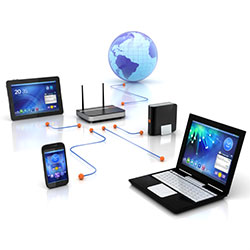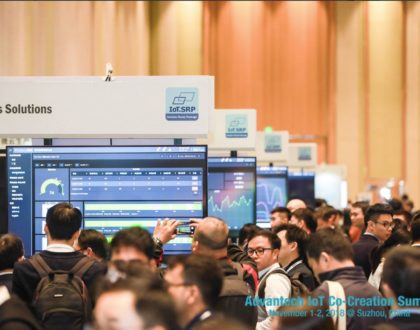The Internet of Things
by Mike Fahrion
The Internet of Things – Industrial Tools vs. Consumer Toys
When people talk about the Internet of Things, consumer products like smart refrigerators always seem to be at the top of the list. The idea is that your autonomous, connected refrigerator of the future will be will be able to inventory your supply of strawberry Greek yogurt and order up a fresh stash when stocks run low. It’s an interesting idea, but I don’t plan to be an early adopter. Hackers have already broken into one smart refrigerator. They hooked it up to a botnet and used it to send out Spam.
Hackers are bad enough, but what about the pranksters? In the old days, the worst thing they could do was call you up and ask you if your refrigerator was running. Nowadays they could cut you out of the loop entirely, and speak directly to the fridge. They could instruct it to stock up on everything from inner tubes to opera tickets.
I think I’ll wait until smart refrigerators get a little smarter, with more robust security protocols.
Smart refrigerators aren’t the only consumer-oriented Internet of Things devices that have begun to appear in the marketplace. The Nest thermostat tracks your movements and learns when to turn the heat or air conditioning up and down, based upon your routine and your preferences. The Beam toothbrush can monitor a child’s brushing habits and report the data to a parent’s smart phone. A vendor at the 2014 Consumer Electronics Show in Las Vegas has even presented a smart phone app that lets a person use facial recognition software to match passing strangers with their dating sites and social media info. That may or may not be a very bad idea — we’ll see how it pans out. But either way, the Internet of Things is upon us.
 Consumer gadgetry gets the headlines, but it’s just one part of the story. In the consumer-centric world, data networking processes revolve around the human experience and our interactions with our gadgets. In the industrial world, the Internet of Things will be about connecting machines to other machines.
Consumer gadgetry gets the headlines, but it’s just one part of the story. In the consumer-centric world, data networking processes revolve around the human experience and our interactions with our gadgets. In the industrial world, the Internet of Things will be about connecting machines to other machines.
B+B SmartWorx has always specialized in giving edge devices of every shape and size the ability to talk with one another. Once upon a time, that meant connecting machines with protocol converters. Eventually it evolved into local networking and Industrial Ethernet. Industrial Ethernet led to a demand for remote networking, which typically involved fiber and cellular solutions. But, although networks continued to expand, and topographies became increasingly complex, there was always a need for ongoing observation and intervention from human operators.
The industrial Internet of Things will alter that dynamic. As connected network nodes become smaller, smarter, and vastly more numerous, they will also become less dependent upon human intelligence. We’ll be replacing it with autonomous physical I/O and software algorithms that can read local conditions, apply business logic, identify what’s important within the data sets, and automatically post it to the relevant databases and applications. We’ll also see edge devices become far more self-sustaining. Instead of requiring ongoing maintenance, like battery recharges or replacement, many devices will remain functional for years — or even decades — without any direct human intervention.
The industrial Internet of Things won’t just connect more devices and collect more data. It will increase industrial efficiency through better utilization of assets and materials and reduced unplanned downtime. And it will do it with less input from human beings.
None of this will happen overnight, of course. Data networking is in a constant state of evolution. And those of you who have known me for a while know that I’m right in the thick of things. I’m already connecting edge devices, not just to each other, but to Ethernet networks and the cloud. That will continue, and new technologies will bring us new ways to do it, steadily bringing more and more connectivity and bandwidth to more and more devices. No single technology is the best for every application yet, so the early incarnations of the Internet of Things will continue to use them all, be it wireless, fiber, copper or cellular. So, even as I look forward to working with new products and new innovations, it will still be part of my job to help keep your existing infrastructure connected. If your older equipment is still getting the job done, there’s no reason that it, too, shouldn’t be part of the Internet of Things.
But not my refrigerator. Not just yet, anyway. I don’t mind tubing down a river on a summer afternoon, but I utterly despise opera.
Recommended Posts

Co-Creation, Paving the Way to a More Connected Future
November 27, 2018

The Benefits of a ‘Do It For Me’ Mentality in the IIoT
October 5, 2018

Why You Need to ‘Mind the Gap’ in Manufacturing Technology
August 31, 2018
